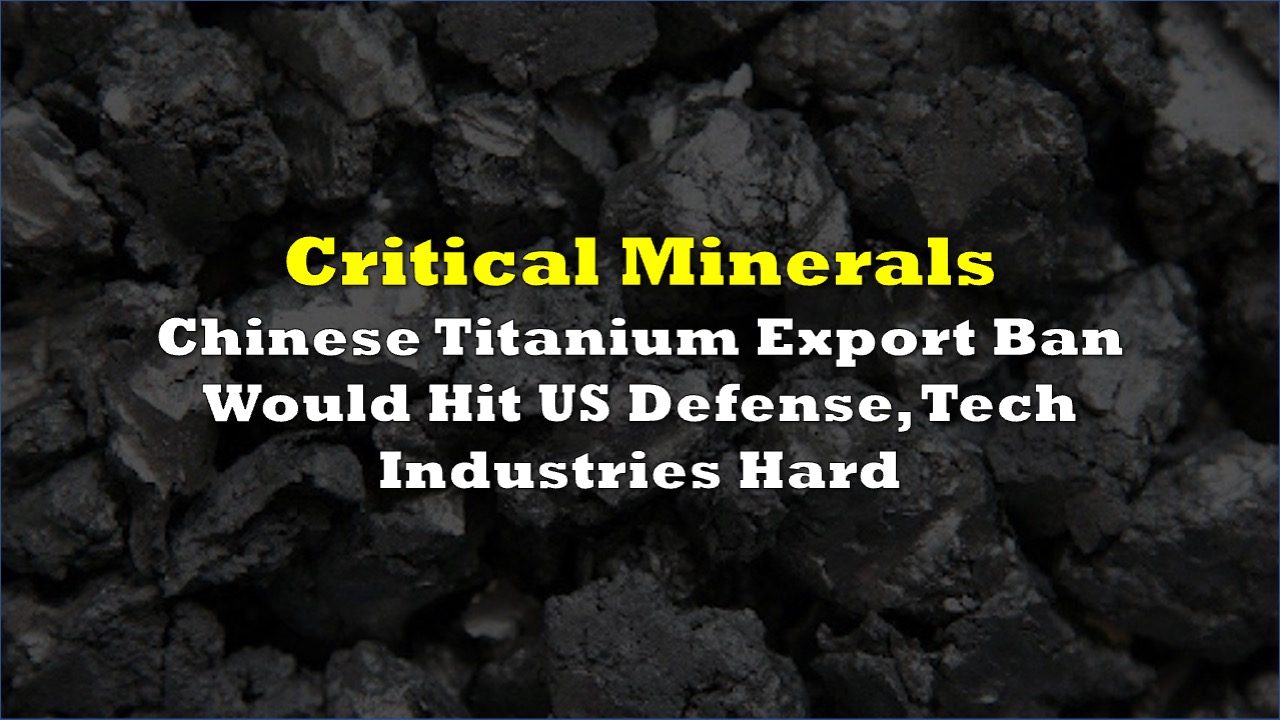A potential Chinese export ban on titanium would severely impact critical US industries, from aerospace manufacturing to electronics production, as the nation relies heavily on imports for the strategic metal.
The United States imports about 90% of its titanium consumption, making it vulnerable to supply disruptions. America produces no titanium sponge domestically, instead relying on Japan for nearly 80% of imports, with Saudi Arabia and Kazakhstan providing 13% and 9% respectively.
China produces about 120,000 metric tons of titanium annually, giving it global market dominance. The country’s mine production of ilmenite reached about 3.1 million metric tons in 2023, approximately double Mozambique’s production levels.
Defense and aerospace are at risk
The aerospace and defense industry consumes about 75% of titanium metal because of the material’s lightweight yet durable properties. A supply disruption would directly impact military aircraft production and commercial aviation manufacturing.
At least one major US defense contractor reportedly remains reliant on Russian titanium at lower tiers of its supply chain, highlighting continued supply chain vulnerabilities even after recent geopolitical tensions.
The electronics industry, particularly robotics, is also exposed
Titanium nitride serves as barrier material in semiconductor device fabrication, while titanium dioxide nanoparticles are widely used in electronics, and titanium compounds function as dielectrics in capacitors and transistors.
Industrial robotics face particular risk, as titanium is crucial for robot manufacturing. Industry experts warn this could undermine US factory automation efforts critical for competing with Chinese manufacturing.
How the government has responded so far
In 2025, the US Department of Defense awarded IperionX (Nasdaq: IPX, ASX: IPX) $47.1 million in funding to develop a fully-integrated domestic mineral-to-metal titanium supply chain, as concerns mount over supply chain vulnerabilities.
The US is is seeking to rebuild domestic titanium production capabilities following the closure of its final titanium sponge manufacturing facility. Australia, which holds 62% of the world’s rutile resources and 32% of ilmenite resources, is positioned as a key strategic supplier for Western nations.
And then there’s the price impact
Recent Chinese export restrictions on other critical minerals provide insight into potential impacts. Following Chinese antimony restrictions in September 2024, antimony shipments from China dropped 97% while prices rose 200%. In December 2024, China banned exports of gallium, germanium and antimony to the US.
Titanium appears on critical mineral lists of the EU, the US, and Japan, reflecting its strategic importance across allied nations.
China’s massive strategic advantage
China’s titanium dioxide industry faces challenges in 2025 with production capacity approaching 7 million tons, while actual production remains at only 4.5-4.6 million tons annually.
This massive overcapacity means China could impose titanium export bans without harming domestic supply, while the industry already struggles with declining demand from China’s troubled real estate sector and anti-dumping tariffs from multiple regions.
Industry analysts say the surplus gives China leverage to weaponize titanium exports as a geopolitical tool, similar to recent restrictions on gallium, germanium, and antimony.
Information for this story was found via the sources and companies mentioned. The author has no securities or affiliations related to the organizations discussed. Not a recommendation to buy or sell. Always do additional research and consult a professional before purchasing a security. The author holds no licenses.









